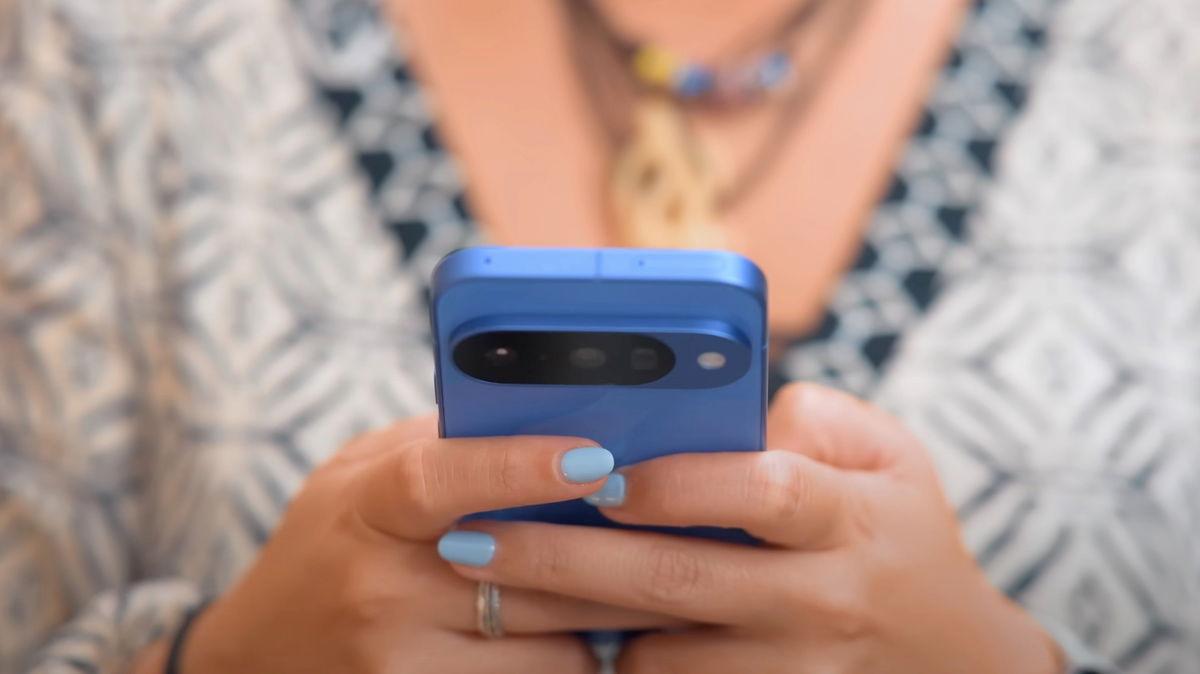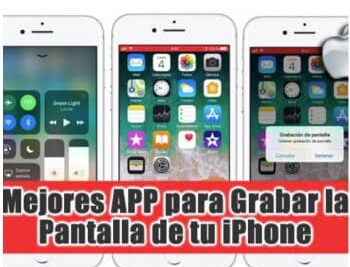
If you are wondering how to take a screenshot or record your screen on iPhoneHere's a complete, clear, and to-the-point guide to help you get it right the first time, whether your phone has Face ID or a home button. In the following lines, you'll see button combinations, shortcuts without pressing them, how to capture long pages, Tricks editing and the fastest way to start a recording with sound from the Control Center. Everything explained in Spanish and with simple steps.
In addition to screenshots, you'll also learn how to record what's happening on your screen: activating the record button, counting down, how to stop recording, and where videos are saved. And, in case you don't see the recording control, I'll show you how to add it using the "+" button in Control Center in iOS 18. I also include options like AssistiveTouch, Back Touch and Siri so you don't have to rely on buttons..
What is a screenshot and what is it used for?
A screenshot is a still image of what you see on your iPhone at that moment, ideal for saving a conversation, a purchase confirmation, a website, or any ephemeral content. It is used to archive, send and document visual information in seconds..
For those who browse, study or work from their mobile, it is an essential and ultra-fast tool; you don't need apps external and with a couple of taps you'll have it ready in your photo library. The advantage is that iOS integrates editing and sharing on the fly..
How to take a screenshot on your iPhone

Models with Face ID (without Home button)
- Press the side (right) and volume up buttons at the same time, then release them immediately; the typical capture flash will appear. It is key to press and release quickly.
- You'll see a thumbnail in the lower left corner; tap it to edit it or swipe left to discard it. This preview disappears on its own if you don't tap on it..
In iOS 18 and earlier, the thumbnail is temporarily displayed in the bottom left corner, where you can open, share, or dismiss the screenshot with a gesture. Interacting with the thumbnail speeds up editing a lot..
Models with Home button (Touch ID)
- Press the Home button and the Side button (on newer iPhones) or the Top button (on older models) at the same time, and quickly release. The screen will flash to confirm the capture.
- Just like Face ID, you'll see the thumbnail in the bottom left corner with instant editing and sharing options. If you swipe it to the left, it saves without opening it..
Older models with top button
- Press the top button and the home button at the same time, with a short press. Visual confirmation (flashing) indicates that it has been done.
- Operate on the thumbnail to edit it or ignore it if you want it to be archived directly. Markup options appear as soon as you tap the preview.
Screenshots without using buttons: AssistiveTouch, Back Tap, and Siri
AssistiveTouch
- Go to Settings > Accessibility > Touch > AssistiveTouch and turn it on; you'll see a floating button on the screen. This button gives access to quick actions without pressing physical buttons.
- Tap the floating button and navigate to Device > More > Screenshot to take it. It's perfect if your physical buttons are damaged or you find it more comfortable.
Back Tap
- Go to Settings > Accessibility > Touch > Back Tap and choose Double Tap or Triple Tap. It's a gesture on the back logo of the iPhone that can be customized..
- Assign the Screenshot action; then tap the back twice or triple-tap and the screenshot will be taken. Works great for not looking at the screen.
Crab
Activate Siri and say, “Hey Siri, take a screenshot.” As soon as you say this, iOS will automatically create one. It's the most direct hands-free way to capture what you see.
Long screenshots: full page and saved as PDF
When you want to capture a page that doesn't fit on the screen (for example, a web page in Safari), iOS allows you to take a full-page screenshot. This feature is ideal for articles, invoices, long chats, or long documents..
- Take a normal screenshot using the buttons or any of the methods above and tap the thumbnail to enter the tool. The step of opening the preview is essential to access the full page..
- At the top, switch from Screen to Full Page; you'll see a preview bar on the right that lets you scroll the entire page. Swipe to check that all the desired content is included.
- If you need to, crop by dragging the handles to keep only the block you're interested in. Cropping saves you editing later in other apps.
- To save, you can choose to save the image to Photos or export the PDF to Files: tap the share button and choose “Save PDF to Files,” choose the location, and confirm. Saving as PDF in Files is the most convenient option for documents.
- If you change your mind, you can cancel or delete from the corresponding menu; iOS displays cancel and delete icons in the editing interface. This way you avoid filling the reel with captures you don't want..
Please note that full-page capture is available natively in Safari and supported web views; this tab may not appear in other apps. If you don't see Full Page, the app probably doesn't support it..
On-the-fly editing, annotations, and sharing
Tapping the thumbnail opens Markup, where you can draw, underline, add text, arrows, or shapes, and crop and rotate. These quick tools avoid installing editing apps for something simple.
With Apple Pencil (in iPad) or with your finger (on iPhone) you can write or draw on the screenshot; you can also use the ruler, change thickness and color. Annotations are perfect for highlighting key data before sharing..
When you're done, hit the share button to send it via Messages, Mail, WhatsApp or the app you prefer, or save it directly to Photos. Sharing from the preview itself is faster than going to the gallery.
Regarding interface behavior, two cases have been described: in iOS 18 and earlier, a temporary thumbnail appears in the lower left corner; in iOS 26 (according to the notes), the screenshot is displayed directly with quick tools and a Save button to choose a destination. In both scenarios, you can edit immediately or save without touching anything else..
Where screenshots are saved and how to find them
By default, screenshots are archived in the Photos app; in addition to being stored in the general gallery, they have their own album. The album is called “Screenshots” and groups all your screenshots.
To go directly to them, open Photos and navigate to Collections > Content Types > Screenshots; you'll find the latest ones there without having to search for them individually. This route greatly speeds up the location of old captures..
If you export to PDF, the file remains in the Files app in the folder you choose during saving, so you can easily send it by email or upload it to the cloud. Saving as PDF in Files is ideal for formal procedures and documents..
How to record iPhone screen
iOS allows you to record video of what's happening on your screen, with a countdown and automatic saving to Photos; this is very useful for tutorials, technical support, or demonstrating a bug. Recording is controlled from the Control Center with a dedicated button.
Activate the Screen Recording button
- Go to Settings > Control Center and add Screen Recording to the included controls if it isn't already listed. Without adding it, you won't see it in the drop-down panel..
- If you don't see the option or need to rearrange controls in iOS 18, tap the “+” button in the top left corner of Control Center to customize it. That “+” is the door to add or move controls to your liking.
Start and stop recording
- Open Control Center: Swipe down from the top right corner (Face ID) or up from the bottom edge (models with a Home button). The gesture varies depending on your iPhone.
- Tap the Record button (a circular icon with a dot inside); you'll see a 3-second countdown, and recording will begin. The red bar or indicator confirms that you are recording.
- To stop, tap the red bar at the top and confirm Stop, or go back to Control Center and tap the record button again. The video is automatically saved in Photos.
Audio in the recording
Control Center lets you capture sound: you can add your voice using the iPhone microphone, which is useful for narrating what you're doing. With a long press on the icon you can toggle the microphone.
Regarding internal system audio, iOS imposes limitations; external audio is generally captured through the microphone. record internal sound of the apps, an alternative is to connect the iPhone to a Mac and use QuickTime, or resort to third-party apps whenever possible. Please note that some apps restrict capture due to rights or privacy..
Screen recording works on iPhone, but also on iPad and iPod touch with compatible versions of iOS/iPadOS; the steps and button are virtually identical. If you're switching Apple devices, the process will be familiar..
If you can't find the Screen Recording button
If the button doesn't appear in Control Center, go to Settings > Control Center and manually add it to "Included Controls." In some cases it is available but not activated by default..
In iOS 18, the Control Center itself can also be customized on the fly; tap the “+” in the top left corner to manage controls without leaving it. This shortcut makes adjusting the panel much easier..
Edit and share your captures and recordings
In screenshots, use Markup to crop, draw, underline, or add text; in recordings, trim the duration from Photos or edit it in your favorite video app. With two more taps you can have the material ready to send..
To share, open the image or video in Photos, tap the share button (box with an up arrow), and choose the app: Messages, WhatsApp, Mail, AirDrop, etc. The iOS menu remembers your most frequent destinations to get you there faster..
Recommended third-party applications
- Snagit: Designed for users who want advanced cropping, templates, and more professional screenshot editing. It is powerful if you need to document accurately and visually..
- Picsew: Specializes in joining scrolling captures and stitching several into a single image. Great for chats or very long web pages.
- Lightshot: Focused on quick annotation and editing, with simple tools to highlight key parts. Ideal if you are looking for speed and simplicity.
If you often capture or record, I recommend setting up Control Center to your liking, adding Screen Recording, practicing your model's button combinations, and having Back Tap enabled as a backup. With these settings, saving what you see will be a matter of a second..
Passionate writer about the world of bytes and technology in general. I love sharing my knowledge through writing, and that's what I'll do on this blog, show you all the most interesting things about gadgets, software, hardware, tech trends, and more. My goal is to help you navigate the digital world in a simple and entertaining way.
